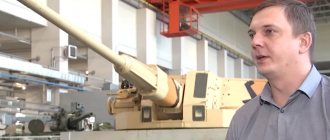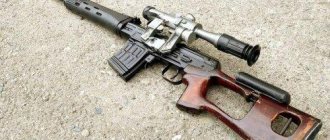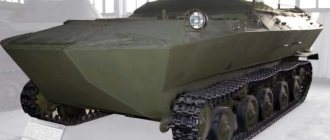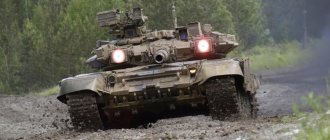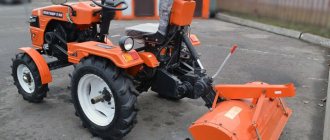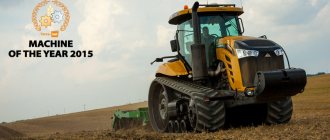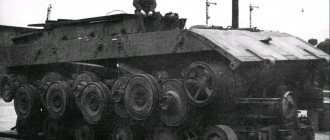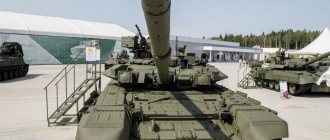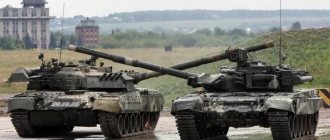The tank is a unique combat vehicle that radically changed the face of war in its time. From the moment of its first appearance on the battlefield to this day, the very appearance of the tank has changed. The school of tank building does not stand still, and its brainchild itself is evolving along with it. In different eras, these steel “chariots of death” looked different, embodying the ideas and needs of their time.
In the first half of the twentieth century, the idea of multi-turret tanks was popular among designers of leading powers. It seemed to tank builders that a larger number of turrets should enormously increase the firepower of a combat vehicle. However, further experience in using such “steel monsters” showed their low efficiency and therefore there are no modern tanks of this design. But at a certain point in time, the development of such “mobile fortresses” was actively carried out in many countries. Some of them remained prototypes, and some were even put into service and participated in combat operations. The USSR, like many other countries, was also not spared by the fashion for “multi-towers”.
We present to your attention the TOP 5 Soviet serial and experimental multi-turreted tanks according to the website slovodel.com.
5th place: T-29
ru.
wikipedia.org The T-29 tank combined a multi-turret design and another popular tank design idea of the time, namely a wheeled-tracked base. Many people are familiar with the light Soviet high-speed tanks of the BT series on a chassis similar in concept. But this combat vehicle was designed on the basis of another wheeled-tracked tank: the amphibious PT-1.
The T-29 is a medium three-turret wheeled-tracked tank of a classical layout with bulletproof and anti-fragmentation armor, the design of which was largely the same as that of the T-28.
The central main turret, located on the second tier, was a slightly modified turret from the T-26-4, into which the KT-28 cannon was installed; there were also attempts to install the PS-3 cannon, but ultimately it was decided to install a 76-mm L-10 gun. 7.62 mm DT machine guns were located in ball mounts on the front and rear sides of the turret.
DT machine guns were also installed in two additional turrets located in the front of the hull on the first tier.
The T-29 had good driving characteristics. He was quite fast and maneuverable. The maximum speed on wheels (on the highway) was about 80 km/h, on tracks – about 50 km/h (on highways and rough terrain).
This combat vehicle was developed in the 1930s. In the period from 1934 to 1937, 5 prototypes were built, which passed the tests quite successfully. The tank was planned to be adopted by the Red Army, but this tank did not go into production due to its complex design.
Light wheeled-tracked tank BT-5
The armored vehicle was created on the basis of another light tank BT-2, the characteristics of which began to become outdated. At the same time, the modernized equipment showed its best performance during testing, and at the end of 1938 a decision was made to mass produce it.
Light tank BT-5
Just a few months after the start of production, armored vehicles entered service in tank brigades and corps. In comparison with its predecessor BT-2, the updated tank was distinguished by high combat characteristics and increased reliability, which is why it was in service with the USSR army for a long time.
4th place: T-100
en.wikipedia.org
The T-100 is a heavy experimental double-turret tank with a classical layout, developed at the end of the popularity of such designs. In fact, it was one of the last projects of multi-turret Soviet tanks.
The tank turrets were located one after the other and thus formed two tiers. On the first there was an auxiliary turret with a 45-mm 20-K cannon, which was designed to destroy armored vehicles.
Behind it, forming a second tier, was installed the main turret, equipped with a 76-mm L-10 cannon to destroy enemy personnel and fortifications.
The combat vehicle was also armed with three 7.62-mm DT machine guns: two in the turrets and one in the commander’s cupola.
In addition to firepower, the T-100 was also well armored for its time. It had basically 60 mm of armor all around, both in the hull and in the turrets. Such armor made it possible to “take a blow” quite decently.
This tank was manufactured in a single copy in 1939 and was tested until 1940. Despite the fact that it was a prototype, it still managed to take part in combat operations. Along with several other experimental tanks, the T-100 was used in battles on the Mannerheim Line during the Finnish War. The tank showed positive results, but it was never put into production. The commission gave preference to the more promising KV-1 tank, abandoning the idea of a complex multi-turret design.
HYDRAULIC SYSTEM
The separate-unit hydraulic system includes:
- three gear pumps with a total capacity of 500 l/min at an engine speed of 1900 rpm
- two spool valves, providing: lifting and skewing of the blade, lifting and changing the angle of inclination of the ripper tooth, the hydraulic servo control system remotely controls the spools.
- tank with filters, hydraulic cylinders
- maximum response pressure of the safety valve – 20 MPa (200 kgf/cm2)
| Spool sections | Distributor spool position | Number of cylinders | Bore x Stroke, mm x mm |
| Blade lift | lift, neutral (hold), lower, float | 2 | 160 x 1400 |
| Blade misalignment | right, neutral, left | 1 | 220 x 360 |
| Raising the ripper | lift, neutral, lower | 2 | 220 x 560 |
| Changing the cutting angle of the ripper | stepless cutting angle adjustment | 2 | 220 x 500 |
3rd place: SMK
commons.wikimedia.org
Bronze is taken by another two-turret “heavyweight” of the Soviet tank industry, which suffered the same sad fate as the previous model, which was developed in parallel with the SMK and underwent combat tests side by side with it.
The SMK was a heavy tank with two turrets of a classic layout. The turrets of the combat vehicle were also located in two tiers: the auxiliary one was on the first in front, the main one was on the second tier behind it.
The auxiliary small turret contained the same 40-mm 20-K cannon as on the T-100. The main turret was already equipped with a 76-mm L-11 gun, which was a modernized L-10 tank gun, which could be found on many Soviet tanks of those years, including the competing Sotka.
In addition, the SMK was armed with four 7.62 mm DP machine guns and one DShK heavy machine gun, 12.7 mm caliber.
In terms of armor, this model was superior to the well-protected T-100. The SMK also had 60 mm of armor in the turrets, but this tank already had 75 mm of armor in the hull.
QMS was also developed in the late 1930s. Like the T-100, it was produced in a quantity of one unit and was sent to the Mannerheim Line to be tested in combat conditions. In general, the combat vehicle met the operational and tactical requirements, but, like its competitor, the SMK was rejected by the commission for the same reasons; in addition, the tank was too heavy and too large.
Modifications and versions (configurations), analogues
- T-35.01 K(Ya) - with a radiator from the Orenburg plant, a liquid heater "PZhD-600", with a permanent fan drive, a coarse fuel filter, a fuel tank volume of 800 l, a resistor float-type fuel level sensor "BM-162", hydraulic tractor motion control (with mechanical rods and levers), a semi-rigid chassis system, a hydraulic distributor manufactured by Promtractor OJSC with mechanical control of the blade lifting and lowering spool, the design of bulldozer equipment with a screw brace and a hydraulic brace.
- T-35.02 K(Ya) - with radiator block "AKG" (Germany), liquid heater "Gidronik-35" (Germany), with adjustable fan drive, with coarse fuel filter "Fleet-guard" (USA) - with function fuel heating and water separation, fuel tank volume 960 l, precise fuel level sensor "UKUT-3502", Kovrov, electro-hydraulic control of tractor movement, strengthening of the main drive due to the installation of bearings with a higher load capacity, carriage running system, modernized hydraulic valves, hydraulic proportional control - joysticks, bulldozer equipment design with two hydraulic braces.
We recommend reading: MTZ 1025: Technical characteristics
The letters indicate the type of engine: I - Yaroslavl; K - Cummins.
The T-35.01YaBR-1 configuration includes: a YaMZ-850.10 engine, a hemispherical blade, a single-tooth ripper. The T-35.01YaBR-2 is a YaMZ-850.10 engine, a spherical blade, a single-tooth ripper. “T-35.01KBR-1” – Cummins QSK19-C525 engine, hemispherical blade, single-tooth ripper. "T-35.02KBR-1" - engine "YaMZ-850.10", hemispherical blade, three-prong ripper. “T-35.01KBR-2” – “Cummins QSK19-C525”, spherical blade, single-tooth ripper.
Imported analogues of the Chetra T-35 bulldozer are the Caterpillar D6T and Komatsu D63E-12 models.
2nd place: T-28
en.wikipedia.org
In second place we have the T-28 tank from the 30s of the 20th century, the first medium tank in the USSR to be put into mass production.
T-28 is a medium three-turreted infantry support tank with a classic layout and bulletproof armor. The prototype of this combat vehicle was the British Vickers 16-ton tank, inspired by which after a visit to Great Britain, Soviet tank builders began to develop their own analogue.
Structurally, it is similar to the already mentioned T-29, the progenitor of which it was. The towers are located in the same way: two machine gun towers in front on the first tier and the main cannon tower on the second.
In two small turrets located in front on the first tier, one 7.62-mm DT machine gun was installed, which made it possible to effectively fight the advancing enemy personnel in two directions.
The main turret was a modified version from the turret of another multi-turret T-35 tank. Initially, it was equipped with a short-barreled 76-mm KT-28 cannon, which was a modification of the regimental gun of the 1927 model. Starting from 1938, the tank was already equipped with a more modern L-10 tank gun with a similar caliber, which was superior in performance to the old KT-28. Two DT machine guns were also installed in the turret.
The tank was produced from 1933 to 1940. A large number of T-28s were produced: 503 units. At the time of its creation, it was the most powerful tank in the world. The first combat use took place during the Winter War, as a result of which it was decided to shield the combat vehicle with additional armor; starting from 1940, 111 units were modified. This modification received the index T-28-E.
This tank was also used in the initial stages of the Great Patriotic War, but by that time it was already obsolete and most of the combat vehicles were lost in the first months.
CHASSIS
Suspension of the Chetra T35 bulldozer, T 3501 bulldozer, T-35.01 tractor : three-point semi-rigid with a remote bogie swing axis provides high traction and traction properties, reduced shock loads on the chassis system, and improved working conditions. Support, support rollers and idler wheels with one-time lubrication for the entire service life with self-clamping “double cone” seals.
| Number of road wheels (each side) | 7 |
| Number of support rollers (each side) | 2 |
The last light tank of the Soviet country - T-80
At the end of 1942, field tests of the last domestic light tank T-80 were completed, after which it was immediately sent to the battlefield, where it showed its best side.
T-80 - the last light tank of the USSR
Despite the good indicators of reliability and combat effectiveness, a total of 85 such armored vehicles were produced. After the enemy acquired more advanced Panthers and Tigers, the T-85 was completely discontinued.
Tank "to frighten"
With the beginning of the war, there was an acute shortage of armored vehicles for the defense of Odessa. And in order to somehow rectify the situation, the defense committee decided to create a secret tank...
Tank or armored tractor?
To “frighten” the enemy, KhTZ developed a special tractor covered with armored steel sheets, which were collected from damaged T-26 tanks. Alas, not all vehicles had guns. Most of the tractor-tanks had dummies of them.
